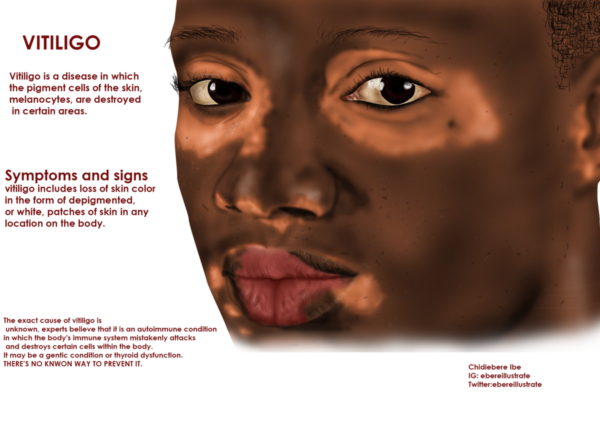Chidiebere Ibe spent the last year learning how to create medical illustrations showing Black bodies. Earlier this month, his illustration of a Black fetus in the womb went viral.
“I wasn’t expecting it to go viral,” Ibe, an aspiring pediatric neurosurgeon, told NBC News. The 25-year-old from Nigeria, who has a chemistry degree from the University of Uyo in Nigeria, is set to enter Kyiv Medical University in Ukraine in January.

Ibe’s illustrations went viral after a Twitter user shared saome of his work.
“I’ve literally never seen a Black foetus illustrate before, ever,” the user wrote. The tweet garnered nearely 50,000 retweets and more than 300,000 likes.
Ibe is also the creative director and chief medical illustrator of the Journal of Global Neurosurgery. He said he first began interested in creating medical illustrations after noticing illustrations he saw while working with the Association of Future African Neurosurgeons didn’t depict Black skin. He also identifies himself as the only Nigerian medical illustrator.
Ibe’s website features anatomical illustrations and depictions of medical conditions using Black bodies.
One illustration features a Black person with vitiligo.

Another illustration features the steps of fetal myelomeningocele surgery.

Medical professionals praised Ibe’s work on social media. “We need diversity in our medical textbooks and patient resources,” wrote Prof Kamlesh Khunti, a diabetes and vascular medicine specialist in the U.K.
“Little did I understand what the drawing meant to a lot of people. On my LinkedIn, on my Twitter, on my Instagram, I read the comments and they really touched me. I was crying,” Ibe told NBC News. “It was amazing to see how good people felt about it. People could see themselves in the drawing.”
Some doctors attribute poorer medical outcomes experience by Black patients to a lack of diverse illustrations in textbooks.
An analysis of medical textbooks by a physician at the University of Pennsylvania found that between 4 percent and 18 percent of images showed dark skin.
“We are not teaching (and possibly not learning) skin of color,” assistant professor of dermatology at the University of California, San Francisco Jenna Lester wrote in an analysis.
When dermatologists overlook or misdiagnose diseases in dark-skinned patients, the consequences can be deadly. The five-year survival rate for melanoma is 94 percent for white patients and 70 percent for Black patients, according to The Skin Care Foundation.
“I was just sticking up for what I believe in, advocating for equality in health through medical illustrations,” Ide said. “I made a deliberate action to constantly advocate that there be inclusion of Black people in medical literature.”
More news from our partners:


